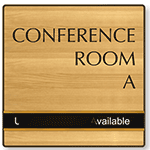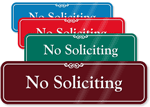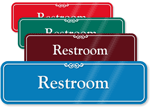Google Glass finally finds place among ‘hands-on’ working professionals
With a San Francisco-based startup integrating workplace software with Google Glass, the wearable technology can now expect something better than the criticism it often receives for breaching privacy.
Drawing upon features of Google Glass to improve the performance of professionals at work, Wearable Intelligence (one of the five partners certified by Google) is creating professional apps under its Glass at Work program. The aim is to introduce Google Glass in various sectors, including healthcare, manufacturing, live broadcasting, and energy.
“It’s for the 90 percent of workers who don’t work behind a computer and use their hands a lot,” says Yan-David Erlich, CEO and co-founder of Wearable Intelligence.
With the help of Glass, professionals in the field will find it easy to access work related information even while they’re performing a task, without having to reach out for a laptop or tablet. The handy device can help a doctor browse through a patient’s medical history in the middle of surgery, and an engineer or technician can go through a building’s blueprint while on the job, using this hands-free technology.
The new enterprise software allows employees a secure sign-in to access the client server, a customizable virtual workflow checklist, and a video streaming feature using the device’s camera.
Beth Israel hospital in New York has recently incorporated this technology into the workplace. The hospital agreed to use Google Glass in its emergency department following a pilot program. The software ensures that no data travels over Google’s server, guaranteeing discretion.
To ensure safety and privacy and block specific uses, Wearable Intelligence replaced Google Glass software with a modified version of Android. This way, doctors will not be able to post pictures of patients on social networking sites or use Glass on a Wi-Fi network other than that of the hospital. Also, Google’s existing speech-recognition technology has been replaced with a more specialized medical dictionary.
Sullivan Solar Power is another company that has incorporated Google Glass at work. To ease the work of field technicians who need to access information related to work, the company has built a custom Glass app which stores all the in-house data related to customers and projects, enabling field technicians to browse through the information by just looking into the eyewear. “A field worker can, say, call headquarters with questions or transmit live video of a roof installation to get some feedback,” reports Wired.
Google Glass has also found enthusiasts in a Georgia Police Department. In collaboration with CopTrax, a surveillance vendor, the Byron police department is equipping its officers with Glass during patrolling, making arrests, and during firearms practice. “They had the CopTrax software loaded into the Google Glass and everything recorded with Glass was then recorded back to our camera system and police cruisers,” said Eric Farris, a police sergeant with the department.
A future potential use for Google Glass can be seen in airlines baggage handling. Cio.com reports, “Most bag lines have one person scanning bags, to verify their destination and other information, and another physically moving bags. Smaller lines use one person to both tasks, picking up and putting down a scanner repeatedly.” Wearable technology like Glass could allow baggage handler to move the bags while simultaneously scanning them.
Category: New Products, Office courtesy













